What is the Transom on a Boat?
The transom of your boat is the section at the rear of the boat onto which the outboard motor is attached. When you’re unfamiliar with all the technical names of a boat it can be confusing to know exactly what someone means when they point out a specific part. Even that definition of a transom would likely be confusing for many if you were asked to point it out on a boat because it’s not the entire rear section of the boat’s hull and not the motor mount or the gunwale.
The transom is the vertical cross section portion of the boat’s stern that strengthens the stern and offers a location to mount a motor. As such, it’s not all of the stern but the outer wall of the stern. It is traditional for the name of a vessel to be painted on the transom above the boat’s waterline.
Do All Boats Have Boat Transoms?
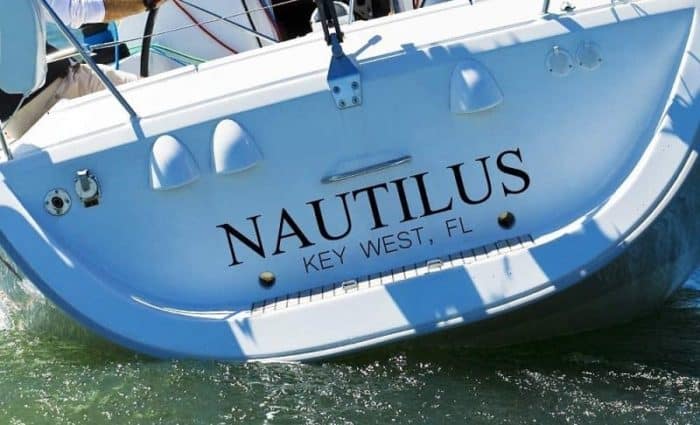
By definition all boats with a horizontal stern that connects the two sides of the hull together across the rear of the vessel have a transom. That flat cross section is the transom but it doesn’t necessarily have to be reinforced. It should be, and it needs to be if you’re mounting an engine on it. That said, if you built your own boat you could do so without reinforcing the transom in any way.
Boats that have a canoe stern, one that comes to a point at the rear of the vessel don’t technically have a transom like what we’re describing here. If you consider the hull of your vessel like outer walls then we would look at the port and starboard sides as the left and right wall and the stern as a rear wall. The bow likely tapers to a point but on some boats, like jon boats for instance, it can be flat as well. That would be like a front wall, giving your vessel four exterior walls.
If a boat is built like a traditional canoe, then the bow and the stern are formed by the port and starboard sides coming together in a point. So the rear point is still the stern of the boat, but there’s no proper transom because there’s no reinforced panel connecting the two sides of the hull.
That said, most boats do have a transom of some kind. They can be small or as wide as the whole beam of the boat itself depending on the design. A boat’s transom should have room to mount an outboard or at least a trolling motor on most boats. Some vessels are much larger of course and can have room to mount two, three or even more motors across the entire transom.
While a transom is generally identified as a vertical surface, it is not always strictly vertical on a 90 degree angle. Some transoms, as a result of the stern design, are designed on an angle as well. This is often called a raked transom. Depending on the vessel, this may involve additional mounting hardware or design accommodations to allow for a motor to be mounted. It is, of course, generally easier to have an alternatively shaped transom on vessels with inboard motors.
Different Between Stern, Transom and Aft
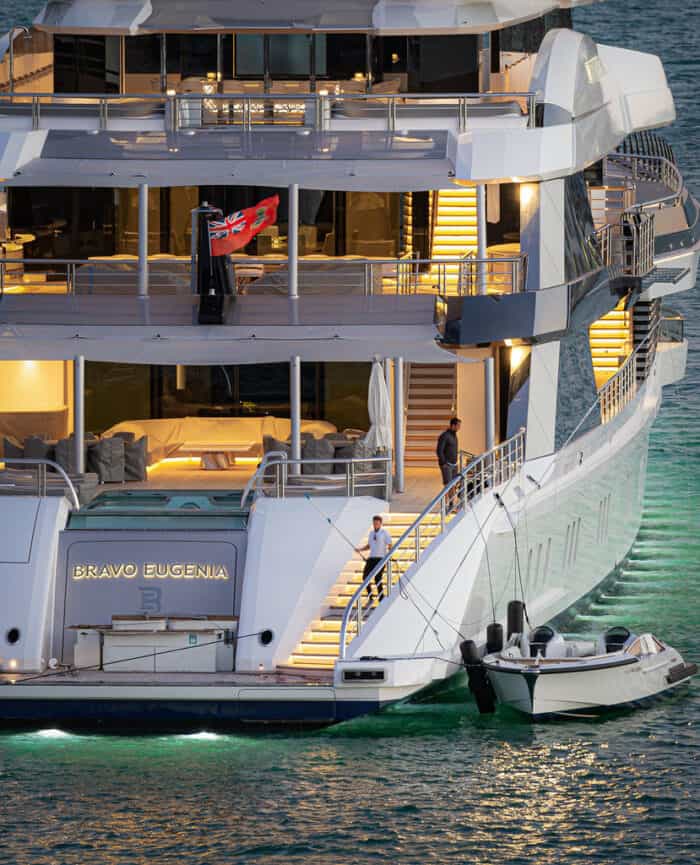
Boating terms are often used interchangeably by many boat owners. In most cases this isn’t really a big deal and the general meaning isn’t lost if someone tells you to go to the stern, to go aft or to go to the transom. You’ll end up at the same place regardless. However, there is a distinct difference between each of these terms.
- Stern: This is the rear of the boat on the outside of the vessel.
- Aft: This is often used as a direct meaning the rear of the vessel but it’s also specifically the rear interior of the vessel.
- Transom: While the stern is the entire rear portion of the boat’s exterior, the transom in specific is the reinforced vertical portion that connects the two sides of the hull and offers the boat stability and shape. So, technically, the transom is on the stern of the vessel.
How Does a Boat Transom Support an Outboard Motor?
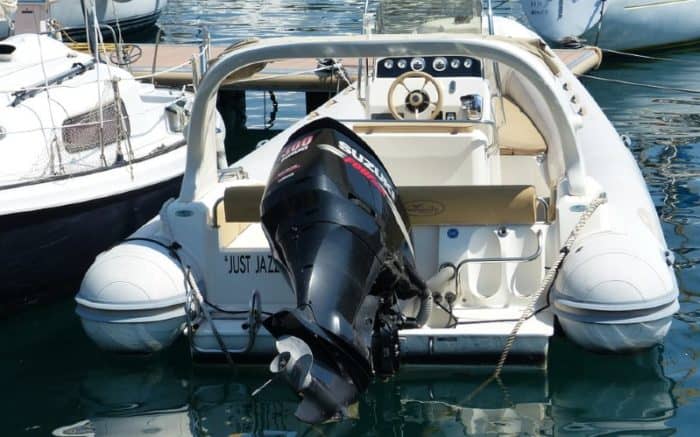
On most boats, a transom is a reinforced panel. On fiberglass boats this often means it is plywood encased inside of fiberglass with padding on the inside as well. This reinforcement is necessary because, where the motor is mounted onto the transom, is a point of considerable stress.
To start with, regardless of how a motor is mounted on a transom, the force created by the motor when it is in operation is going to transfer stress from the motor casing itself to the transom. The padding and reinforcement absorb this force and help ameliorate the stress caused by the motor when it is in operation that could, over time, pull at the transom, the mount, the bolts and so on, loosening the set up and potentially causing damage.
If you didn’t have a reinforced transom, the torque from your motor would likely destroy your transom and potentially cause the motor to come unmounted and maybe even detached from the boat.
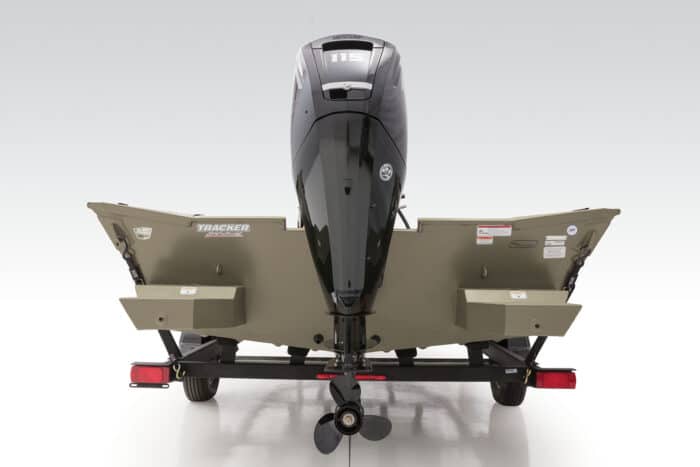
Additionally, and especially on saltwater craft, there is a risk of corrosion and degradation caused by saltwater over time. This is true of all parts of the boat. But fiberglass reinforcement is not subject to damage from saltwater and a wet transom the way metal or some other substances would be so it allows it to hold up over time and use.
Because the transom is designed to strengthen the hull of the boat and maintain the integrity of the hull from one side to another, it’s one of the stronger parts of the hull. Along with the gunwales, it’s designed to take on extra weight and stress and that includes having things attached to it.
Modern boats are typically designed with the intent that a motor will be attached to the transom. Most, in fact, have spaces clearly earmarked for motors to be mounted on them.
Depending on the boat, the motor and the transom itself the motor can be mounted directly on the transom or there can be additional mounting hardware needed. If a motor is able to be lifted up and out of the water then titled up there will have to be some kind of hinged mounting involved and often this is an additional piece that connects the transom proper to the engine itself.
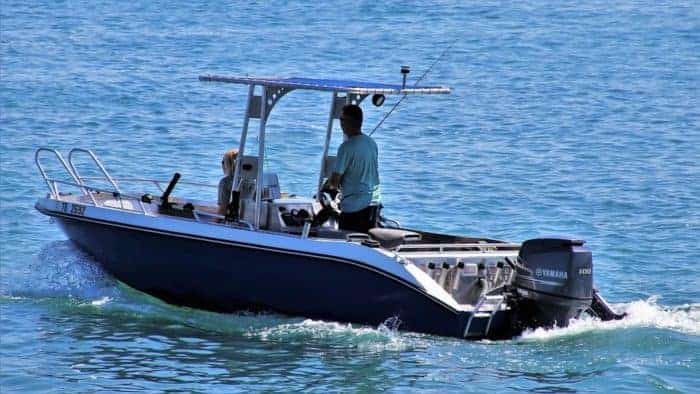
The size of the transom also dictates the size of the motor that can be mounted on it. A motor that is too large can’t be mounted on a transom not designed to accommodate it. Likewise, if a reverse transom sits too high for a motor then the propeller may not be able to properly reach the water and that can affect your boat’s speed and mileage. You may end up with a very ineffective motor that wastes time and money while producing very poor results.
On the other hand, a transom that is too low can result in the motor being too low in the water. That could cause the motor to flood more easily, to get tangled or damaged by things under the surface and also provide poor thrust.
Is a Transom One Solid Piece?
There is no set design for how a transom needs to be built or how it needs to look. For instance, you’ll find that many boats, in particular larger fishing boats, center consoles, yachts and more will have a transom that has a door built into it. This allows boaters access to a swim platform or to engage in other water sports at the rear of the vessel.
Other features besides ladders and a motor can be attached to the transom as well. Because of its location at the rear of the vessel and its reinforced nature, it makes it ideal for mounting load bearing structures and devices that need to have extra support. This can include elements like a ladder, various consoles, trolling motors and more.
What is a Transom Saver?
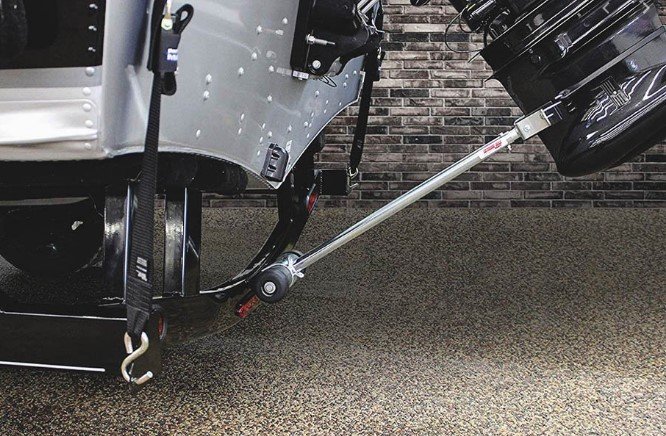
Even though a transom is reinforced and designed to handle weight and stress, it can still take a beating when your boat is in motion on a boat trailer. A transom saver adds extra reinforcement to protect it from the weight and stress of having the outboard motor attached. Every time you trailer your boat with an outboard, the motion and forces that hit your motor are transferred through to the transom where it’s mounted. Over time it can wiggle and jostle the mount enough to damage the transom itself. This is caused by bumps and shaking on a trailer that your boat won’t experience on the water.
In practical terms, a transom saver is a bar that goes from the outboard itself to the trailer. It works something like a shock absorber to prevent too much motion and stress on the outboard, thus ensuring it isn’t shaking and yanking on the transom where it’s mounted.
You don’t need a transom saver for your boat if you’re not trailering it as it doesn’t have a practical use for a boat out on the water.
The Bottom Line
The transom of your boat is located at the stern. It is the reinforced vertical portion of the stern that connects the sides of the boat giving it form and structure. It is also typically the place where an outboard motor will be attached to the vessel and where the name of the boat may be painted.
Not every vessel has a proper transom, such as a canoe where the sides of the hull meet at a point. Most boats do have a transom, however, and they can come in a variety of shapes and sizes.
Categories: Boats











